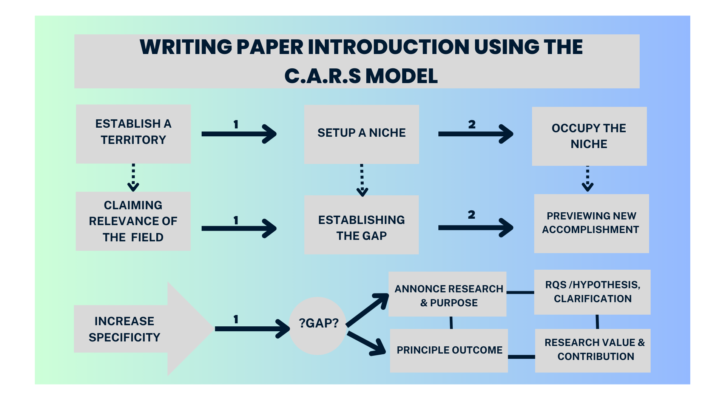Month: May 2024

The C.A.R.S. Model to Framing and Revising Your Introduction Section
28/05/2024
Work well begun is half done. Same applies to research papers, and poorly drafted introductions definitely damages the response towards the research paper during peer review. The traits of a poor introduction are that they are excessively broad, vague and at the same time lack context as well as a background. Unlike well-made introductions, poor introductions might ignore the research gap and they rather focus on the work of the author and not the field. One must also be cautious of not using too many jargons or unsupported statements in the introduction section, making the section unsupported, long, repetitive and vague at the same time.
Now, the question arises, how to design and draft a good introduction section. Let us discuss about the Create a Research Space (CaRS) framework created by John Swales. Let us begin by having a look at the flowchart talking about the workflow of the CaRs Model

The Workflow for the CARS model.
When writing a research paper, the introduction serves as a critical component. It will establish the rhythm of the entire paper and at the same time hold the attention of the reader by generating importance and curiosity towards the research paper and give an overview of not just the purpose of the paper as well as its key findings.
Ad evident from the above flowchart, the model comprises the following stages
Establish a Territory
Set up a Niche
Occupy the Niche
By focusing on these three moves step by step and graduating to the next level in a sequential manner the three important aspects of the introduction can get covered.
Research Question
Context
Persuading the audience
a) Research question: It is the foundation of the study and time should be invested in making a relevant research question. It will create an opportunity for you to find all the information that you need and at the same time create the scope of the study and the data requirements. Hence the study question has to be focused, succinct and at the same time practical.
b) Context: Context paves the path for creating comprehension and it can assist people in understanding as well as following your message. Before you dive deep into the details, give the background of the study so that the reader is able to grasp the relevance of the message. Always remember to create your context keeping in mind the knowledge level as well as requirement of your reader. Offering a context always helps audience to understand your message better.
c) Persuade your audience: The best way to convince your audience is to gain credibility of win the trust of the reader. That can be done by showing your experience, qualification as well as the understanding of the subject matter. It should address the wants of the audience. As a writer remember to take the emotional perspective into consideration and motivate the readers by connecting with their emotions. You may have to use descriptions, anecdotes and sometimes even emotional language to do this. In this effort, don’t forget that research is based on facts and here trust is built on statistics, expert opinion and real examples.
